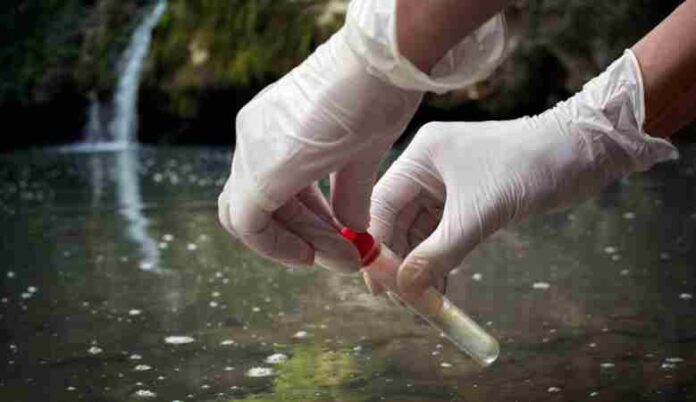Most people have come across the terms PFAS and ‘forever’ chemicals by now. Raising awareness about the issue is one thing that we have done reasonably well. It also helps that many of us know someone in our circle of friends and family who has been affected by these chemicals.
Data shows that more than 26 million Americans drink water contaminated with ‘forever’ chemicals. That’s a shockingly large portion of the entire population. When you consider how prevalent issues like cancer are, it starts to make you wonder how much of it is caused by the water we drink.
Thus, the question of cleaning up our water demands a lot of attention. However, ‘forever’ chemicals are notoriously difficult to get rid of, and even Europe is dealing with the crisis as well. Are cleanup efforts even possible? Let’s find out.
Cleaning Up PFAS-Contaminated Water Sources: Is it Even Possible?
The Challenges of Removing PFAS from Water
One key factor contributing to the difficulty of removing PFAS from water is their complex chemical structure. PFAS consists of carbon-fluorine bonds, which are exceptionally strong and non-reactive.
This structural resilience makes PFAS resistant to degradation by conventional water treatment processes such as oxidation, chlorination, or ultraviolet radiation. The carbon-fluorine bond is one of the strongest chemical bonds in nature, rendering PFAS highly resistant to breakdown in the environment.
We are already witnessing the effects of PFAS contamination through the Camp Lejeune incident that occurred almost seventy years ago. It was one of the first incidents where ‘forever chemicals’ found their way into the water supply of the Camp Lejeune Marine base in North Carolina.
Over the next two decades, Marines, their families, and other individuals were exposed to the chemicals. TorHoerman Law states that over one million people ended up being affected by the contamination. The most serious of these issues was cancer- several types of it, to be precise.
Today, seven decades later, affected individuals are still filing Camp Lejeune water contamination lawsuit cases. There couldn’t be a clearer example of how serious this type of contamination issue is.
When it comes to water, PFAS are unfortunately known for their high water solubility. It enables them to migrate easily through groundwater and surface water. This enhances their ability to contaminate vast areas, making it challenging to isolate and treat specific sources of contamination.
Limitations of Conventional Water Treatment Methods
One of the commonly employed conventional methods for PFAS removal is activated carbon adsorption. While effective to a certain extent, this approach has limitations. Activated carbon has a finite adsorption capacity, and its efficiency diminishes over time as the carbon becomes saturated with PFAS.
Regenerating spent activated carbon can be technically challenging and may involve complex processes, rendering it less economically viable and sustainable in the long term.
Likewise, ion exchange resins represent another widely used method for PFAS removal. However, like activated carbon, ion-exchange resins have a finite capacity for PFAS removal, and the resins eventually become exhausted.
The disposal of spent ion exchange resins also poses environmental challenges as they may generate significant volumes of PFAS-laden waste, requiring proper handling and disposal procedures.
Emerging PFAS Cleanup Strategies and Technologies
Thankfully, we are seeing the development of new cleanup strategies. Take AOP, for instance. AOP stands for ‘Advanced Oxidation Processes. AOPs involve the generation of highly reactive species, typically hydroxyl radicals (•OH), which possess powerful oxidizing capabilities.
These radicals attack and break down the chemical bonds of PFAS molecules, leading to their transformation into less harmful byproducts or mineralization into carbon dioxide and water.
The primary mechanisms of AOPs include photolysis, sonolysis, and chemical reactions catalyzed by various oxidants, such as ozone (O3), hydrogen peroxide (H2O2), and ultraviolet (UV) light.
Unlike ion exchange and carbon adsorption, which primarily involve the physical removal or sequestration of PFAS, AOPs actively break down the molecular structure of PFAS.
Getting Nature on Our Side Can Also Help
Bioremediation, a technique that utilizes the natural abilities of microorganisms to degrade or transform pollutants, has gained increasing attention.
In contrast to traditional methods such as carbon adsorption and ion exchange, bioremediation offers a sustainable and environmentally friendly treatment method. It works by harnessing the inherent capabilities of microorganisms to break down complex compounds.
In the context of PFAS, certain microorganisms have demonstrated the ability to enzymatically degrade or transform fluorinated compounds, potentially rendering them less harmful.
The primary mechanisms include biodegradation, where microorganisms use PFAS as a carbon and energy source, and biotransformation, where specific enzymes break down the PFAS molecular structure.
Bioremediation has the potential for long-term effectiveness, as microorganisms can adapt and evolve to optimize their capabilities over time. This adaptability allows for sustained PFAS degradation, even in the presence of complex mixtures of contaminants.
An Unavoidable Reality: Cleanup is Going to be Challenging and Expensive
Tackling the chemical complexity of PFAS requires a concerted effort from the scientific community, policymakers, and industry stakeholders.
The cost of developing and deploying advanced technologies, conducting extensive site assessments, and managing the associated legal and regulatory processes can be staggering. The financial burden is often compounded by the need for long-term monitoring and maintenance of remediated sites.
The absence of a universally effective and economically viable remediation technology adds another layer of complexity. Yes, AOPs and bioremediation are promising options, but we are going to need a lot more help to successfully deal with contamination that occurs on a large scale.
In conclusion, the biggest issue with the entire PFAS contamination situation is its ‘forever’ nature. This isn’t one of those problems that we can simply ignore and let time do the work for us.
That’s the method that politicians often take, but doing so is only going to hurt our children and their children, and so on. Some PFAS chemicals are so strong that they can endure for thousands of years. Are we really ready for that?
It would mean people in 3024 will be affected by contamination that we ignore or create today, and that is a frightening thought.
Also Read: Transforms Business Management














